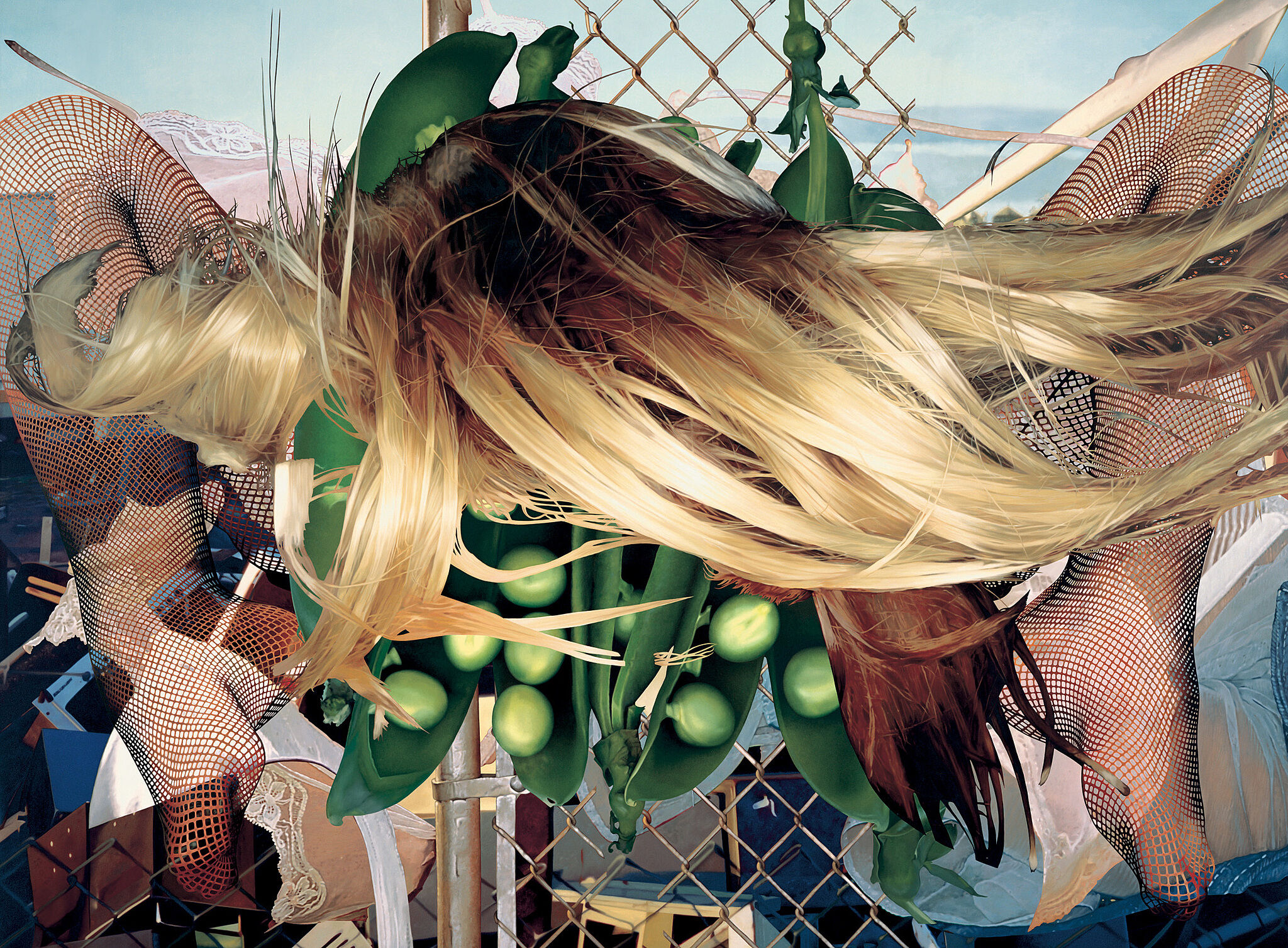Jeff Koons: A Retrospective | Art & Artists
June 27–Oct 19, 2014
Jeff Koons: A Retrospective | Art & Artists
Easyfun-Ethereal
10
Easyfun and Easyfun-Ethereal signal the start of Koons’s engagement with hand-painted oils on canvas, a medium he continues to use today. For Koons, this centuries-old tradition conveyed a greater warmth and psychological energy than the more mechanical means of his earlier paintings, yet his new process was anything but old-fashioned. As with the Banality sculptures, he began each composition with readymade images, which he grafted onto paper, scanned, and manipulated digitally. To execute each painting, Koons worked with teams of assistants for up to six months, painstakingly transferring his collage to canvas entirely by hand. Although these canvases brim with exuberance and abundance, their disjointed elements and phantom limbs can also hint at the manic and disorienting side of overconsumption.
Junkyard, 2002
Like most of the Easyfun-Ethereal paintings, Junkyard melds diverse sources into a labyrinthine composition of dizzying layers. Expanding on the legacy of Pop artist James Rosenquist’s cropping and silhouetting of images, Koons uses computer software to create even more complicated spatial arrangements. The layers that are immediately identifiable in the center of the painting (flowing blonde hair, chain-link fencing, and peapods) overlap and are flanked by snippets of visual information that prove much harder to decipher. Images of fishnet stockings, a lacey negligee, and a junkyard intersect and interlock in a kaleidoscopic fashion. The combination and confusion of these sexual and mundane references call into question the relationship of sensuality to consumer culture, while evoking the layered and changing graphics common to the internet and computer screens.

